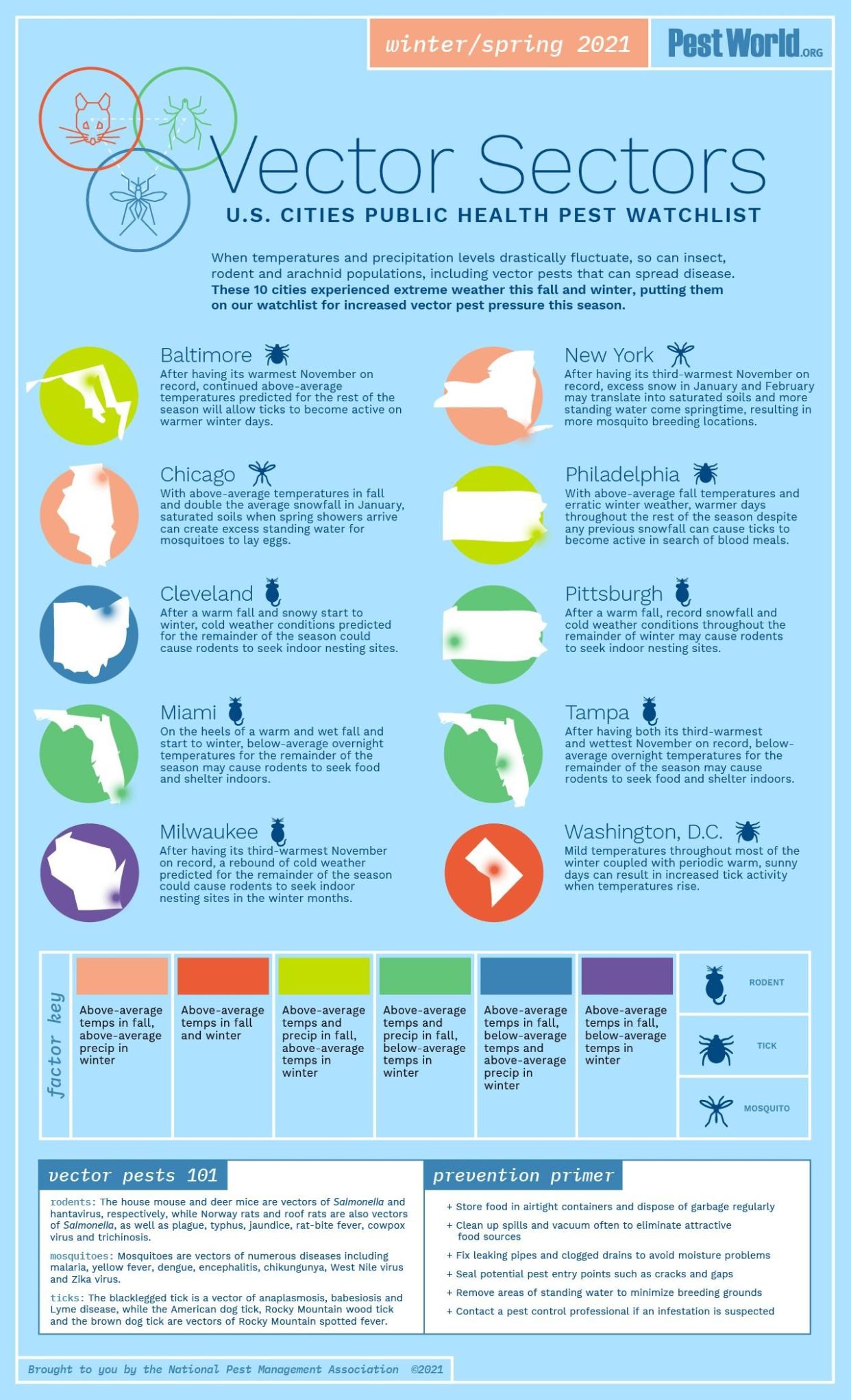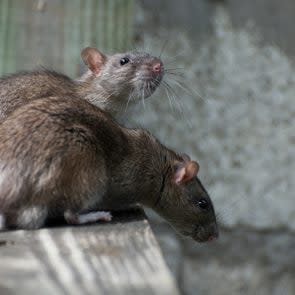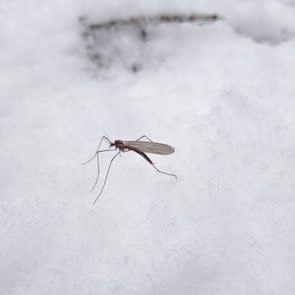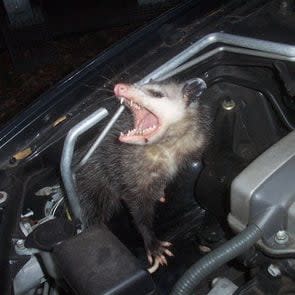If You Live in These Cities, Pest Populations Are About to Spike
During the winter and spring, it can be all too easy to completely stop worrying about pests. It’s too cold for bugs and other critters, and they don’t really start being active until the summer, right? Just like humans?
But in fact, many pest populations can still thrive during the winter, and even pick up into the end of the cold season and into the spring. Add to that the unusual weather patterns that are rapidly becoming normal across many regions of the United States (thanks, climate change) and the conditions have become just right for many pests to thrive.
According to the National Pest Management Association (NPMA), which just released its bi-annual Vector Sectors list, there are ten cities that are most at risk for abnormally large pest populations of ticks, mosquitos, and rats as winter comes to an end and spring has finally sprung. In alphabetical order, the cities are Baltimore, Maryland; Chicago, Illinois; Cleveland, Ohio; Miami, Florida; Milwaukee, Wisconsin; New York City, New York; Philadelphia, Pennsylvania; Pittsburgh, Pennsylvania; Tampa, Florida; and Washington, D.C.
These data only take ticks, rodents, and mosquitos into account, so there’s no information on bedbugs, but one of those cities is also the city with the worst bed bug infestation in America.

As you can see from the color-coded graphic, different factors contribute to different pest surges. Baltimore’s warm winter means tick activity will be present on warm winter days. Meanwhile, Cleveland and Pittsburgh’s warm fall and freezing start to winter may cause rats to seek shelter indoors, and excess late-winter snow melting in Chicago and New York will give mosquitos all the standing water they need for a population explosion come summer.
Basically, warm, wet falls and winters mean increased tick activity, warm, wet falls and cold winters mean increased indoor rodent activity, and warm, wet falls and above-average snowfall in winter mean a spike in breeding mosquitos. Unfortunately, accelerating climate change means that all these conditions are more likely than not to be the norm from now on.
And these critters are more than just unwelcome visitors in your home—they can also be dangerous. “From food contamination and respiratory issues caused by rodents and cockroaches to…Lyme disease spread by ticks, diseases transmitted by pests pose a significant threat to public health and require vigilance to help reduce exposure,” explains an NPMA source.
So what can we do? To prepare for—and prevent—pests no matter where you live, the NPMA recommends storing your food in airtight containers, not letting garbage accumulate, and immediately cleaning up spills. Also, make sure your home is free of these things you didn’t know were attracting pests.
Some home maintenance tasks can also help keep pests out, like fixing leaky pipes, eliminating standing water, and sealing all cracks that pests could potentially enter through. And, of course, if you do experience an infestation, the best thing to do is call a professional exterminator. You may also want to check out these 15 essential products for people who hate bugs.
Source:
PestWorld.org: “Winter & Spring Vector Sectors”
This Is the Most Rat-Infested City in America
Where Do Mosquitos Go in the Winter?
Pest Nightmares That Will Make You Cringe
The post If You Live in These Cities, Pest Populations Are About to Spike appeared first on Reader's Digest.



